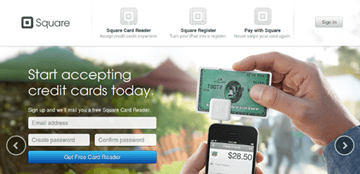June 29, 2021
The Undeniable Power of a Strong Call-to-Action
What’s Happening?
Getting consumers to take the action you want them to is often easier said than done. Why are they leaving that pair of shoes in their shopping cart? Why wouldn’t they sign up for your Shakespeare-inspired e-newsletter, or listen to your 20-minute podcast all the way through? Never fear – there is hope. All you need to do is make sure your website, digital content or ad units have a compelling call-to-action, or CTA as it is more commonly known.
A CTA is more than an industry buzzword – it is the strategic foundation for all marketing efforts, or it should be. This not-so-subtle nudge is intended to prompt users to perform a specific action that sometimes becomes an afterthought, when it should be the strategic North Star.
Sarcastic one-liners and symbolic imagery can make it hard for users to know what an ad is about, let alone get the hint about what you want them to do. And instead of simplifying the message and having all aspects of the ad work together, the final product is an out-there image with a default “learn more” CTA that isn’t personalized to the consumer.
No wonder they are bouncing!
What Does This Mean?
Consumers are stopping before the finish line. They see your ad, watch your video or visit your website, but then what? If they aren’t clearly enticed with a next step prompt, their attention will go elsewhere. There are plenty of other things they could be doing.
In 2000, Microsoft conducted a study that reported a person’s attention span was only 12 seconds. Fifteen years later they conducted that same study and found that attention spans dropped to eight seconds. Since then, others have found that our global attention span is narrowing even more because of the abundance of information presented to us.
Needless to say, advertisers have only seconds to make an impact – and those who choose to confuse a user or ask them to do multiple things at once will not see results. When users stop midway through their journey, conversion rates drop, engagement rates suffer, and even though you got your ad in front of the right target audience, they didn’t take that next step or action that you (or your client) wanted them to take in the first place.
What Should Marketers Be Doing?
So what brands are doing call-to-action marketing well? Square has done an excellent job of understanding what their target audience is looking for and highlighting the value their product can bring to the table and how they can offer a solution to their target audience’s problems. This isn’t just in the product development stage – it’s obvious in the language used on the website, and specifically their calls-to-action.

This landing page highlights the benefits of using their product and positions it as a solution to one of the biggest problems for small-business owners: accepting credit card transactions on-site:
- The CTA’s use of the word “get” is highly motivating and directional
- The form has only three fields, which makes for a simple user experience
- An offer is built into the language of the CTA as the enticement factor
“What do you want the user to do?” should always be at the forefront of any strategy, whether it is on a website or a social media post. The goal of the ad should be reflected in every aspect of the user journey, from the imagery used to the fake button displayed. Copy should be written with the CTA in mind, and distracting “fluff” should be minimized as to not confuse or distract the consumer from the end goal of the ad.
Not every CTA has to be “buy now.” Marketers should align their CTA with where their target audience is in their user journey or familiarity with your brand. The old saying, “You never kiss on the first date,” is the same with a CTA. You can’t ask someone who has never heard or been exposed to your brand to buy something right away – you have to nurture them along the way.
Not having a CTA is not an option, and defaulting to “learn more” should be the last thing advertisers strive for. Make your CTA intentional, clear and enticing. Clear does not mean boring. The most impactful CTAs will have the perfect balance of creativity and directness.
Is it time to test your CTAs?
newsworthy

more musings...
